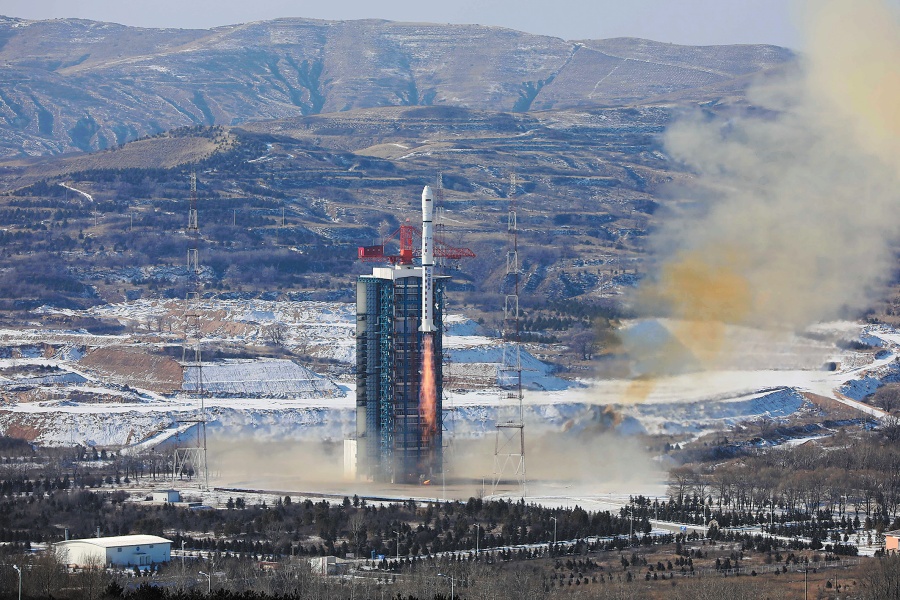China, Brazil make progress on 7th satellite
CHINA DAILY, November 19, 2024 Adjust font size:

Spacecraft designers and engineers from China and Brazil are working to develop a remote-sensing satellite that will obtain data and images for public services and economic development.
The CBERS-6 is under research and development at the China Academy of Space Technology in Beijing and Brazil's National Institute for Space Research in Sao Paulo, and will become the seventh satellite of the China-Brazil Earth Resources Satellite program.
According to the China National Space Administration, the 800-kilogram satellite will use a Brazilian structure and will be equipped with Chinese microwave imaging instruments such as an X-band synthetic aperture radar.
It is scheduled to be launched around 2028 by a Chinese Long March 2C or 2D carrier rocket from the Taiyuan Satellite Launch Center in North China's Shanxi province, and will work in a sun-synchronous orbit, the administration said.
Chinese President Xi Jinping has called the CBERS program a good example for high-technology and space cooperation among developing countries.
Researchers from both space bodies have held several meetings to discuss technical issues and have reached agreements on major arrangements. Meanwhile, the two sides have begun to work on the conceptual design for the CBERS-5, which will be followed by the CBERS-6, it noted.
The basis for space cooperation between China and Brazil was established in May 1984, when both countries signed a complementary agreement to the cooperation framework agreement on science and technology.
Four years later, they commenced their cooperation in the satellite field by signing a protocol establishing the joint research and production of the China-Brazil Earth Resources Satellites.
After several years of painstaking work, CBERS-1, the first satellite created by the joint endeavor, was launched in October 1999. The second and third satellites — CBERS-2 and CBERS-2B — were launched in October 2003 and September 2007.
All of the first three satellites have been retired.
The fourth, CBERS-3, was lifted in December 2013 but failed to enter its preset orbit due to rocket malfunctions.
The fifth satellite, CBERS-4, which was launched in December 2014, and the most recent in this fleet, CBERS-4A, which was deployed in December 2019, are still operating.
All six CBERS satellites were launched by Chinese rockets from the Taiyuan Satellite Launch Center.
The CBERS program has generated and distributed millions of images to users in China and Brazil. Data products made by the program have served a wide range of public services in the two countries, including land resources surveys, environmental inspections, climate change research, disaster prevention and agricultural forecasts.
Rafael Lopes Costa, a Brazilian space engineer in the CBERS-4A program, said the satellite and its predecessors have enabled his country to be more independent on remote sensing data, adding that products generated by CBERS satellites "are very important for monitoring our large national area and environmental preservation and other applications".
The two nations have also offered a large amount of CBERS images to other developing countries and regions to help with their socioeconomic development.